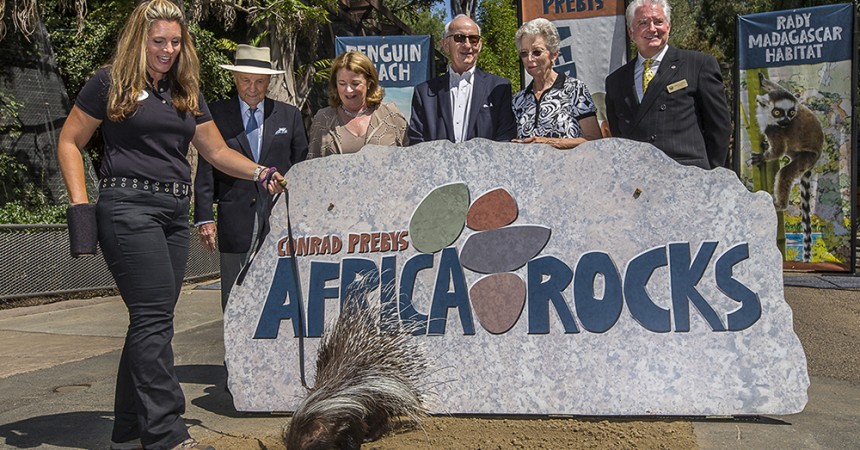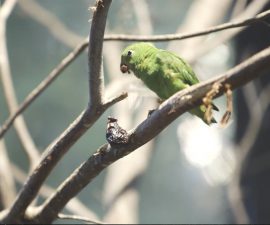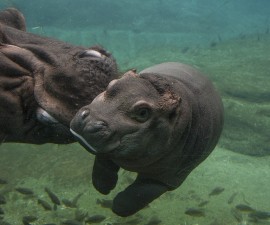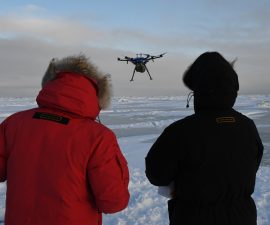An African crested porcupine had the honor of taking the first dig this morning, when the San Diego Zoo broke ground on the largest expansion in its 99-year history. Conrad Prebys Africa Rocks is a $68 million project that will transform eight acres of the Zoo and replace 1930s-era grottos and enclosures (formerly known as Cat and Dog Canyon) with new habitats for African plant and animal species that range from savanna to shore.
When the exhibit opens in 2017, Africa Rocks will entirely transform the area that was previously a steep canyon. Africa Rocks’ gently winding, ADA-accessible pathway will lead guests through different types of African habitats—including a West African forest, acacia woodlands, Ethiopian highlands, kopje gardens and a Madagascar habitat.

More than 4,500 individual donors, including the visionary gift of $11 million from Conrad Prebys, have contributed to the Africa Rocks Campaign. Principal donor Ernest Rady provided a $10 million matching gift challenge in 2013 that resulted in 3,800 individual donors giving more than $20 million toward the exhibit. Other principal donors, Dan and Vi McKinney, gave $5 million for the creation of an African penguin habitat. Additional funds have been generously given by corporations, private foundations and estate gifts.
”We want Conrad Prebys Africa Rocks to showcase Africa, where wildlife and habitat are being threatened like never before,” said Douglas Myers, president and CEO of San Diego Zoo Global. “The new area has been designed with some innovative exhibit features that demonstrate San Diego Zoo’s leadership in animal welfare and give us some amazing storytelling opportunities, to help connect people to wildlife.”
Africa Rocks will be a home to mammals, reptiles, birds, and plant life native to Africa. The exhibit will feature a range of primates, including hamadryas and gelada baboons, vervet monkeys, and lemurs. Other mammals in the exhibit will include southern ratel, fossa and an African leopard.
The Zoo is now home to two African penguins, found in the Children’s Zoo—but expect this number to grow when Africa Rocks’ penguin beach opens, and the Zoo begins its participation in an international species survival plan for these endangered aquatic birds. There will also be a walk-through aviary with sociable weavers.
Dwarf crocodiles will be among the reptile species in Africa Rocks, which are the smallest of the crocodile species. Other reptiles featured in the exhibit will include Agama lizards and spurred tortoises.
The Zoo will also be relocating several old-growth trees, including a ficus and a sausage tree. Other African-native plants in the exhibit will include acacia, aloe, Madagascar ocotillo and palms.
Bringing species back from the brink of extinction is the goal of San Diego Zoo Global. As a leader in conservation, the work of San Diego Zoo Global includes on-site wildlife conservation efforts (representing both plants and animals) at the San Diego Zoo, San Diego Zoo Safari Park, and San Diego Zoo Institute for Conservation Research, as well as international field programs on six continents. The work of these entities is inspiring children through the San Diego Zoo Kids network, reaching out through the Internet and in children’s hospitals nationwide. The work of San Diego Zoo Global is made possible by the San Diego Zoo Global Wildlife Conservancy and is supported in part by the Foundation of San Diego Zoo Global.
Photo taken on July 29, 2015 by Ken Bohn, San Diego Zoo





